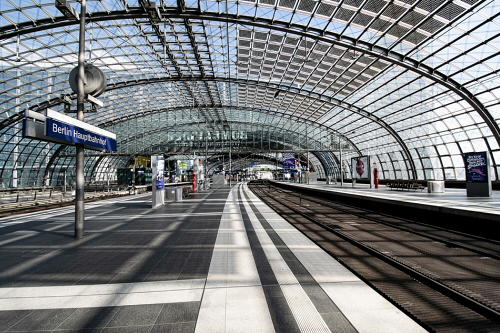Borders May Be Closed, But Co-Creation Is Always Open for Business
Additive manufacturing – a kind of next-gen 3D printing – allows remote teams to collaborate quickly and efficiently
While the World Health Organization declared COVID-19 a global emergency on March 11, Siemens engineers in Bavaria and beyond watched warily as the mounting number of cases threatened to overwhelm Europe’s hospitals. Spare parts, masks, and face shields were already scarce due to supply chain disruptions in China at the pandemic’s start. Like many of their peers, they yearned to help – and had just the right tool for the job. Only a few months earlier, the company had launched its Additive Manufacturing (AM) Network, a virtual global factory on-demand platform. The question was: How to match that factory with the needs of far-flung doctors?
The AM Network is an online marketplace that connects members with designers, engineers, and factories around the world. As its name implies, “additive manufacturing” is industrial-strength 3D printing, using metals or polymers to accrete the finished product. Its advantages are speed and flexibility – instead of having to retool machines, you can simply reprogram them, albeit at greater expense than traditional long production runs. Which is why it’s typically deployed to produce valuable components on demand – for trains and turbines in Siemens’ case, which has more than 200 such machines itself. Prior to the pandemic, network members used it to produce artificial hips and even glove compartments for BMW MINIs.
Watching hospitals scramble to repair ventilators and protect doctors and nurses, the Siemens team asked themselves, “How can we connect those who desperately need these parts with suppliers who can deliver them?” says Robert Meshel, the network’s director. First, they opened the platform to all comers, enabling organizations in need to place an order, request help, or upload the schematics for a new design. Second, they raced to recruit new suppliers, adding more than 100 in a matter of weeks. Finally, the team worked with members to design, curate, and upload an open-source library of 3D models for masks and parts anyone could use.

REAL TIME SOLUTIONS
For example, one of the first in-demand items were clamps for securing homemade face shields. As Karsten Heuser, vice president of additive manufacturing at Siemens, recounts, this came at a time when governments were pirating shipments of personal protective equipment and “they were simply not available by any other technology.” His engineers, working virtually alongside colleagues from other firms and healthcare professionals, created free designs that were then sent to plants in Singapore and the United Kingdom. (One customer was Siemens itself, which printed a supply of shields to protect staff in its factories.)
In another instance, a German hospital chain approached the network to replenish its rapidly diminishing stockpile of a critical component for respirators, one it could no longer obtain from the original manufacturer. The hospital shipped an example to Siemens, whose engineers spent three days reverse-engineering the component, creating a 3D model, and sharing it with the network for production.
While that was happening, the AM team was busy translating its customer experience center in the Bavarian city of Erlangen, Germany, into a virtual one where interested customers could solicit advice, support, and quotes from each other as well as assistance from Siemens. Since opening in May, the virtual version has been visited by more than 1,600 potential new partners from dozens of companies. “With our cloud-based platform, we could bring together training, product design, and transactions all on the same platform, whether they were working from home or in a factory,” Heuser says.
EXTENDING THE LEARNING CURVE
After the initial crisis had passed in Europe, the team had time to reflect on what they’d learned and where they had erred in their initial assumptions only months earlier. For instance, as valuable as the network was when it was still limited to paying enterprise partners and trained engineers, it was even more powerful when medical experts could connect directly with service providers and express their own needs. How to strike that balance going forward? “We’re working on how to open the system again to this long tail of need,” Meshel says. As the epicenter of the pandemic shifted to the global south, Siemens joined forces with South Africa’s National Ventilator Project to design and manufacture 10,000 ventilator parts for hospitals.
More broadly, the pandemic proved the efficacy of additive manufacturing at a time when supply chains were on the brink. A global network of collaborators, able to work together from anywhere and produce almost anything, provided crucial flexibility at a moment of literal life and death. Going forward, Meshel predicts “manufacturing as a service” will become the norm as manufacturers like Siemens seek to shorten their supply chains through more resilient networks of just-in-time suppliers. “This is a trend that had already started,” he says. “But the pandemic strengthened it and is going to accelerate it.”








